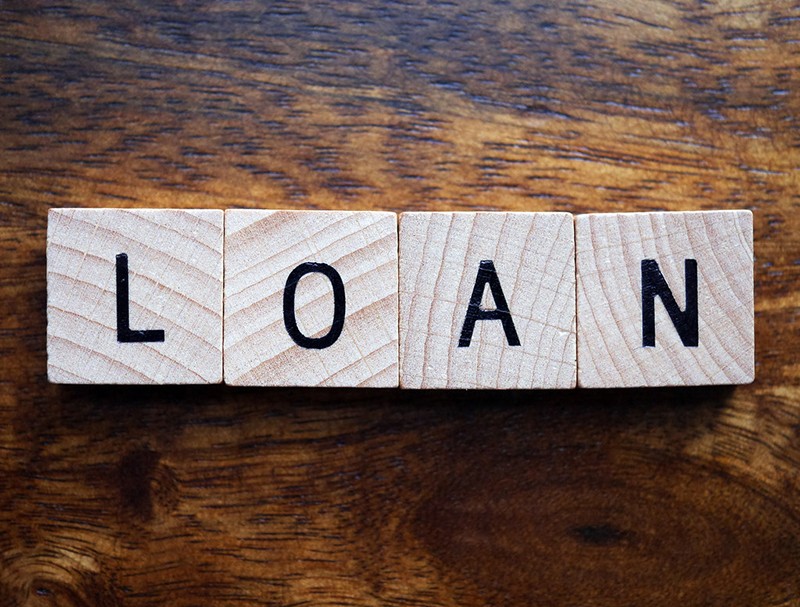Have you ever found yourself with a little extra cash, only to watch it slip away into the abyss of unnecessary expenses? Well, let me tell you. Many people experience lifestyle creep when they start earning more money and begin to upgrade their lives—sometimes without realizing it. A new car here, an upgraded phone there, and suddenly, your budget is stretched thin. Lifestyle creep can derail even the best financial plans. But fear not! With some proactive strategies in place, you can always keep your spending in check while still enjoying life’s pleasures. Let’s explore how to set clear financial goals and create a balanced approach that allows you to thrive without breaking the bank.
Set Clear Your Financial Goals
Having clear financial goals is the golden key to a solid financial strategy. Start by identifying what you truly want to achieve. Is it buying a home, saving for retirement, or perhaps traveling the world? Write down your goals and make them specific. Instead of saying, “I want to save money,” aim for “I will save $10,000 for a down payment by next year.” This clarity gives you direction. Next, prioritize your goals based on urgency and importance. You might be tempted to splurge on that new gadget today, but remember: every dollar spent can impact your future plans. Lastly, review your goals regularly.

Pay Yourself First
Paying yourself first is a game changer. Before you tackle bills or expenses, set aside a certain portion of your income for future savings and investments. This simple principle prioritizes your financial future over your immediate wants. It creates a habit that fosters discipline and helps build wealth over time. Start small if necessary. Even ten percent can make a difference as it accumulates. Automate the process to ensure consistency; this way, you won’t be tempted to spend that money elsewhere. By making yourself the priority in your financial journey, you empower yourself to stick to your long-term objectives without falling into the trap of lifestyle creep.
Delay Big Purchases
When temptation strikes, it’s easy to jump into a big purchase. But hold on for just a moment. Delaying that buy can make all the difference. Take time to evaluate whether you really need it or if it’s merely an impulse. Often, after some reflection, the excitement fades, and clarity emerges. A good rule of thumb is called the “waiting period.” Basically, you just need to give yourself 30 days before committing to larger buys like electronics or furniture. This strategy helps separate your wants from your needs. You might find alternative solutions during this waiting game—like renting instead of buying.

Upgrade Slowly
Upgrading your lifestyle can be tempting. New gadgets, clothes, or even cars often seem irresistible. However, rushing into these purchases can lead to financial strain. Take time when considering upgrades. Assess whether the item truly enhances your life or is merely a fleeting desire. Sometimes, waiting allows you to determine if it’s a need rather than just a want. Staying mindful of these strategies can help prevent lifestyle creep from taking hold of your finances, allowing you to stick closely to achieving those ambitious goals you’ve set for yourself. Soon, you’ll get that financial freedom you’ve been dreaming of.…





 Position trading is a strategy that involves holding onto securities for an extended period, ranging from weeks to months or even years. This type of trading requires a long-term approach and focuses on profiting from major market trends instead of short-term price fluctuations. Unlike day trading and scalping, position traders don’t need to monitor the markets constantly as they tend to make trades less frequently. Instead, they rely on fundamental analysis and technical indicators to identify potential opportunities in the market. It is known that one advantage of position trading is that it allows investors to ride out any short-term volatility in the market while waiting for their selected securities to appreciate over time.
Position trading is a strategy that involves holding onto securities for an extended period, ranging from weeks to months or even years. This type of trading requires a long-term approach and focuses on profiting from major market trends instead of short-term price fluctuations. Unlike day trading and scalping, position traders don’t need to monitor the markets constantly as they tend to make trades less frequently. Instead, they rely on fundamental analysis and technical indicators to identify potential opportunities in the market. It is known that one advantage of position trading is that it allows investors to ride out any short-term volatility in the market while waiting for their selected securities to appreciate over time.

 Mortgage advisors also help their clients get approved for a mortgage. They will work with you to ensure that your paperwork is in order and that you have everything you need to get approved.
Mortgage advisors also help their clients get approved for a mortgage. They will work with you to ensure that your paperwork is in order and that you have everything you need to get approved.

 In line with the above, always consider the reliability of a platform before transferring money abroad. How soon can the receiver get their money? Can you trust the platform to send the money owed? Always check on the reliability of the transfer process from the sender to the recipient.
In line with the above, always consider the reliability of a platform before transferring money abroad. How soon can the receiver get their money? Can you trust the platform to send the money owed? Always check on the reliability of the transfer process from the sender to the recipient. Businesses know the adage: time is money. You can focus on growing your business, making your products and services competitive, and building relationships. It’s an excellent decision to have your accountant do all the bookkeeping. With a flat monthly fee for bookkeeping, you can save time and money and focus on the more critical tasks of your business. Professional bookkeeping services take care of all your accounting needs. This means you don’t have to worry about penalties, delays, and fines.
Businesses know the adage: time is money. You can focus on growing your business, making your products and services competitive, and building relationships. It’s an excellent decision to have your accountant do all the bookkeeping. With a flat monthly fee for bookkeeping, you can save time and money and focus on the more critical tasks of your business. Professional bookkeeping services take care of all your accounting needs. This means you don’t have to worry about penalties, delays, and fines. Accountants have the training and experience to perform financial and accounting tasks competently and the knowledge and expertise to provide tax advice. A professional accountant will enable your company to take full advantage of
Accountants have the training and experience to perform financial and accounting tasks competently and the knowledge and expertise to provide tax advice. A professional accountant will enable your company to take full advantage of  Data on income, sales and expenses can flow directly to your books from the banks. This will save you much time transcribing them. When using the traditional accounting software, it is not only time-consuming, but it is also difficult and expensive. If you have a thriving business, hiring a cloud accountant will give you more opportunities to focus your attention in growing your business.
Data on income, sales and expenses can flow directly to your books from the banks. This will save you much time transcribing them. When using the traditional accounting software, it is not only time-consuming, but it is also difficult and expensive. If you have a thriving business, hiring a cloud accountant will give you more opportunities to focus your attention in growing your business. It is essential to pay your loans on time. This includes mortgage payments, credit cards, and loans. Your credit score will improve if you pay your loans and bills on time. Credit cards and loans will almost always show up on your credit reports. But other billers, such as utilities, cell phone providers, and Internet service providers, may also show your payment history.
It is essential to pay your loans on time. This includes mortgage payments, credit cards, and loans. Your credit score will improve if you pay your loans and bills on time. Credit cards and loans will almost always show up on your credit reports. But other billers, such as utilities, cell phone providers, and Internet service providers, may also show your payment history.


 Like any other market, you will never succeed in the stock market if you don’t have sufficient knowledge. Beyond basic trading procedures, you need to equip yourself with the latest stock market news and essential aspects that affect the prices of stocks. Some of the most important details you need to equip yourself with include general economic outlook and interest rate plans, among others.
Like any other market, you will never succeed in the stock market if you don’t have sufficient knowledge. Beyond basic trading procedures, you need to equip yourself with the latest stock market news and essential aspects that affect the prices of stocks. Some of the most important details you need to equip yourself with include general economic outlook and interest rate plans, among others. or accidents involving others. This type of insurance also includes legal expenses among other additional costs. To get the right auto insurance service, you must choose the right company. Here is what you should consider when selecting one.
or accidents involving others. This type of insurance also includes legal expenses among other additional costs. To get the right auto insurance service, you must choose the right company. Here is what you should consider when selecting one. We have heard of cases of companies going bankrupt and shutting down, which is a loss for those who subscribed to their services. Do your research and go for one that is stable financially. Choose one with a good reputation and has been around for long.…
We have heard of cases of companies going bankrupt and shutting down, which is a loss for those who subscribed to their services. Do your research and go for one that is stable financially. Choose one with a good reputation and has been around for long.… The first step is to list all your assets and liabilities in the business. An asset is the owners claim in the business. All the liquid cash, cash at bank, debtor, building and any other investment the owner has invested in. A liability is the amount of money the business is obligated to pay to other people. Tax is also a form of liability. Find the difference between the assets and liabilities. The figure you get is called the net assets. This is the real value of the business. It will form the base of your taxation.
The first step is to list all your assets and liabilities in the business. An asset is the owners claim in the business. All the liquid cash, cash at bank, debtor, building and any other investment the owner has invested in. A liability is the amount of money the business is obligated to pay to other people. Tax is also a form of liability. Find the difference between the assets and liabilities. The figure you get is called the net assets. This is the real value of the business. It will form the base of your taxation. Different countries have different tax rates. Understand the tax rate of the countries of operation. Normally if a business is a sole proprietorship business, the business and the owner are treated as one tax entity. The business will not be taxed; the sole proprietor will be taxed. If the business is a partnership, the partner will be taxed on behalf of the business.
Different countries have different tax rates. Understand the tax rate of the countries of operation. Normally if a business is a sole proprietorship business, the business and the owner are treated as one tax entity. The business will not be taxed; the sole proprietor will be taxed. If the business is a partnership, the partner will be taxed on behalf of the business. the online platform and in a prescribed manner. If you qualify as outlined in the requirements stipulated in the website, the loan will be processed and approved without many technical producers. 3 month payday loans are highly appealing to borrowers due to the simplicity in application and approval. Loan repayment is also transmitted through the same platform at the convenience of the borrower.
the online platform and in a prescribed manner. If you qualify as outlined in the requirements stipulated in the website, the loan will be processed and approved without many technical producers. 3 month payday loans are highly appealing to borrowers due to the simplicity in application and approval. Loan repayment is also transmitted through the same platform at the convenience of the borrower. Processing and approval of a loan require passage of various departments, and therefore it is prudent that a borrower makes his request early in the day in order to guarantee such approval. Also, it is a known fact that business is more likely to be completed in the morning rather than in afternoons. Evening applications are known to fail in surpassing the cutoff period.
Processing and approval of a loan require passage of various departments, and therefore it is prudent that a borrower makes his request early in the day in order to guarantee such approval. Also, it is a known fact that business is more likely to be completed in the morning rather than in afternoons. Evening applications are known to fail in surpassing the cutoff period.
 If you do not trust the internet, then you should ask for a referral from friends and family. Try and find someone who has utilized the services of a debt ender and have him refer you. You, however, do not have to get one referral and stop searching. You should talk to as many people as possible. And inquire about the quality of services they received from the different debt counselors available.
If you do not trust the internet, then you should ask for a referral from friends and family. Try and find someone who has utilized the services of a debt ender and have him refer you. You, however, do not have to get one referral and stop searching. You should talk to as many people as possible. And inquire about the quality of services they received from the different debt counselors available. It is essential to understand that the process of getting a payday loan is straightforward and quick. With this type of a loan, you can apply it now, and within an hour, you have the money in your bank account. This is one of the reasons why most people prefer this type of a loan. Therefore, if you have an emergency and you need the money immediately, then this is the best type of a loan you are required to consider.
It is essential to understand that the process of getting a payday loan is straightforward and quick. With this type of a loan, you can apply it now, and within an hour, you have the money in your bank account. This is one of the reasons why most people prefer this type of a loan. Therefore, if you have an emergency and you need the money immediately, then this is the best type of a loan you are required to consider. It is important to know that your chances of getting this loan are higher as compared to other financial institutions such as banks. Also, since payday loans are available for small amounts of money, this means that the associated risks are small and therefore they offer financial assistance to various consumers. Also, most people consider payday loans because all terms of the loan are stated beforehand.…
It is important to know that your chances of getting this loan are higher as compared to other financial institutions such as banks. Also, since payday loans are available for small amounts of money, this means that the associated risks are small and therefore they offer financial assistance to various consumers. Also, most people consider payday loans because all terms of the loan are stated beforehand.…
 When carrying out personal bookkeeping, it is just as easy to get confused with the complications of adding up the figures. Always try to focus on simplicity. Not all businesses are similar, so if you can personalize your books to fit your business operational model, the better. If you are not confident in your ability to track income and expenses as well as the tax laws required to make your submissions do not shy away from seeking professional assistance.…
When carrying out personal bookkeeping, it is just as easy to get confused with the complications of adding up the figures. Always try to focus on simplicity. Not all businesses are similar, so if you can personalize your books to fit your business operational model, the better. If you are not confident in your ability to track income and expenses as well as the tax laws required to make your submissions do not shy away from seeking professional assistance.… When hiring a forex broker, you need to be quite selective. In fact, the company you hire ought to be regulated. Ensure you stay away from the unregulated brokers. Apart from this, ensure that the broker is licensed and supervised by a local or international authority. If you choose to work with unregulated brokers, it is like depositing your hard-earned cash with an unlicensed bank.
When hiring a forex broker, you need to be quite selective. In fact, the company you hire ought to be regulated. Ensure you stay away from the unregulated brokers. Apart from this, ensure that the broker is licensed and supervised by a local or international authority. If you choose to work with unregulated brokers, it is like depositing your hard-earned cash with an unlicensed bank. In this particular market, the risk of losing money is high just like there is a high chance of earning money. Your forex broker should advise you on the risk involved with a given investment opportunity. In fact, the professional ought to offer you warnings when the risk is huge. Just like any other business, you should invest the amount you can only afford to lose.
In this particular market, the risk of losing money is high just like there is a high chance of earning money. Your forex broker should advise you on the risk involved with a given investment opportunity. In fact, the professional ought to offer you warnings when the risk is huge. Just like any other business, you should invest the amount you can only afford to lose. The banking industry has yellow flagged lots and land loans.Most of the big banks operational today experienced serious losses relating to this type of loans. During the housing market collapse, the economic downtown witnessed made them shy away from the property markets. Several banks are still recovering from the losses experienced during that period. The present oversight regulations, market uncertainties, mandatory capital requirements and stringent underwriting procedures have affected their operations. With time the banks might ease their restrictions and restore the loans for lots and lands on their books.
The banking industry has yellow flagged lots and land loans.Most of the big banks operational today experienced serious losses relating to this type of loans. During the housing market collapse, the economic downtown witnessed made them shy away from the property markets. Several banks are still recovering from the losses experienced during that period. The present oversight regulations, market uncertainties, mandatory capital requirements and stringent underwriting procedures have affected their operations. With time the banks might ease their restrictions and restore the loans for lots and lands on their books. There are banks that have realized that this is the right time for loans for lots and land to thrive. From their perspective, lot loans are a suitable way to build their businesses. Lenders without active loan programs make exceptions to acquire and retain valued banking customers. The banks hope that their new customers will begin with a lot loan and later seek construction loans and long term financing in addition to other banking products.…
There are banks that have realized that this is the right time for loans for lots and land to thrive. From their perspective, lot loans are a suitable way to build their businesses. Lenders without active loan programs make exceptions to acquire and retain valued banking customers. The banks hope that their new customers will begin with a lot loan and later seek construction loans and long term financing in addition to other banking products.…

 This is the major step to ensure you get a low-cost insurance cover. You should not accept any particular offer from any insurance company. You should note that there is stiff competition among insurance companies. Thus, each company will try to give you the best rate to lure you. When an insurance firm provides you with a great insurance plan for the automobile, you need to check rates provided by many other companies before you choose premiums. In this way, you will find a top deal out there.
This is the major step to ensure you get a low-cost insurance cover. You should not accept any particular offer from any insurance company. You should note that there is stiff competition among insurance companies. Thus, each company will try to give you the best rate to lure you. When an insurance firm provides you with a great insurance plan for the automobile, you need to check rates provided by many other companies before you choose premiums. In this way, you will find a top deal out there. It is necessary to ensure your car is safe. This is because insurance companies can cover the cost of the car before it is stolen. The cost of insurance can be dependent on different factors such as the model and make of the car. Thus, if your car is quite expensive, then you are likely to pay high premiums.
It is necessary to ensure your car is safe. This is because insurance companies can cover the cost of the car before it is stolen. The cost of insurance can be dependent on different factors such as the model and make of the car. Thus, if your car is quite expensive, then you are likely to pay high premiums. After identifying your mission, you need to work on your budget. This will help you in identifying and estimating your resources and talents. You will also be in a good position of seeing some challenges and even the opportunities you may get. Therefore, after you have determined your budget, ensure that you work on it. If in debt, plan for repayment If you need to improve your financial status, ensure that you plan to repay your debts. This, therefore, includes the student loans. Always you are required to count the cost before acting. This means that you are required to know the total amount of loan you should repay. This will help you in preparing on how to repay it. If you forget your student loan, it is likely to affect your budget afterward.
After identifying your mission, you need to work on your budget. This will help you in identifying and estimating your resources and talents. You will also be in a good position of seeing some challenges and even the opportunities you may get. Therefore, after you have determined your budget, ensure that you work on it. If in debt, plan for repayment If you need to improve your financial status, ensure that you plan to repay your debts. This, therefore, includes the student loans. Always you are required to count the cost before acting. This means that you are required to know the total amount of loan you should repay. This will help you in preparing on how to repay it. If you forget your student loan, it is likely to affect your budget afterward. You need to start an emergency fund in case you need replacement or if your stuff may break. This capital fund should help you in case you might be facing some of the unexpected financial problems. Also, ensure that you know the process that is involved before starting the emergency fund. Get a trusted accountability partner If you have a friend who you can trust, then you can rely on him or her by working with him or her. By doing this, you are likely to improve your financial savvy before you graduate or leave college. Always ensure that you choose the best friend who is honest and understandable.…
You need to start an emergency fund in case you need replacement or if your stuff may break. This capital fund should help you in case you might be facing some of the unexpected financial problems. Also, ensure that you know the process that is involved before starting the emergency fund. Get a trusted accountability partner If you have a friend who you can trust, then you can rely on him or her by working with him or her. By doing this, you are likely to improve your financial savvy before you graduate or leave college. Always ensure that you choose the best friend who is honest and understandable.…